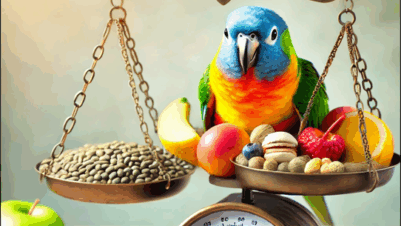THE head of agriculture at HSBC Bank, Patrick Tomlinson, addressed farmers at the South West Dairy Show. In his view there is a growing global demand for agricultural produce and there is a good future for the dairy farmer.
It is important, however, to control costs. The price of milk, he pointed out, has varied from 20ppl to 28ppl and the farmer is unable to control the price variations laid down by the buyers. It is the costs of production where the greatest gains are to be had and these are under farmer control.
Standing up in the middle of a mass of farmers having lunch is not perhaps the best location to deliveradetailed analysis but the various veterinary initiatives on view were certainly targeted at helping the farmer to control the controllable.
One of the aspects of the National Dairy Event and the Bath & West Dairy Show, that is not immediately apparent before arrival, is the depth of information, help and support that is presented. The dairyman can address almost any topic to do with cattle health in discussion with veterinary surgeons and specialists on the veterinary practice stands, animal health company staff, various people representing organisations and the detailed presentations arranged throughout the day. It would be interesting to take a problem issue and see just how the various advisers would tackle the job.
The BCVA repeated the series of demonstrations with speakers as part of the Health Planning Programme that was promoted last year, but there were subtle differences and updated content. Dick Sibley and Peter Orpin addressed Johne’s Disease with the use of a rubberised herd. A young bull was purchased with no clinical signs and a clear blood test. No questions were asked about the status of the herd where the bull came from, but the bull is infected. A calf is born into an infected environment and picks up the infection within the first month of life and so a clean herd is put at risk.
The use of repeated milk tests for the cows was discussed and the fact that positive cows should be removed from the maternity area. High-risk systems that favour Johne’s Disease can be predicted from the MyHealthyHerd computer programme and include the feeding of waste milk and pooled colostrum to young calves and the use of communal calving areas.
The message was to purchase wisely, control the risks and look to the herd health status of a herd, not just the individual animal. Questions followed about vaccination and the value of matching the vaccine status of any incoming cattle to the status of the herd. Possibly the most important message to the farmers was the deliberate approach to disease control and reducing the element of chance or bad luck.
Engagement
The more engagement there is between confident veterinary advisers and farmers at the practical level, the more impact these presentations are likely to have.
Other topics presented by the use of various aids were foot trimming, a healthy start for young stock, acidosis, mastitis management, dairy cow mobility, the impact of mastitis on fertility in the first 100 days of lactation, untimely deaths and tackling lameness.
In another area XLVets was promoting the Farm Skills Programme. It wasn’t clear just what one had to do to wear a bright green T-shirt but many of these are likely to be increasingly seen. The season of practical gatherings for farmers to consider topics of interest is now under way and next spring will be the time to review uptake and progress. Initial signs are strong and many people will be involved in delivery.
Training aside, there was political activity on TB with visits by shadow ministers and grand indications of intent, and the introduction of a film by the NFU. Although somewhat difficult to locate on the fringe public TV channel, the film can be viewed at www.countrychannel.tv/bovine_tb. Copies are also available from NFU head office.
A survey by Genus asked farmers to match the reasons for cows being culled with an analysis by DairyCo in 2003. So the six reasons – infertility, disease, lameness, production, mastitis and other – needed to be matched with 5%, 5%, 11%, 16%, 28% and 35%. If you knew the answers you could win £100 of semen vouchers.
Economics drove many of the enquiries. Kingshay indicated that the costs and losses per litre of milk produced for a 125-cow 7,500-litre herd, were 6.7p total feed, 4.0p labour, 0.9p vet and med, 1.4p higher purchased feed, 2.5p poor fertility and 0.7p mastitis. The solution promoted was to spend 0.2ppl on a consultant “to measure and reduce costs and improve profits.
At the South West Dairy Event there wasarecord attendance. Lord Devon, president of the Royal Bath & West of England Society, visited the commercial exhibition accompanied by the High Sheriff of Somerset. His Lordship expressed interest in liver fluke and explained that the herd of deer at Powderham Castle have not been known to suffer from the disease.
He congratulated the various exhibitors for the “buzz” around the show and the interest shown by the farmers in the products and technical opportunities presented.
Seven veterinary practices were observed located within various halls around the showground. Some appear to have reserved the same location year after year while others move around. As the heavy rain developed during the afternoon, more farmers moved away from the avenues outside and looked for technical help rather than hospitality. On many of the practice stands they found both.
■ In 2010, the National Dairy Event and Livestock Show moves to the National Exhibition Centre, Birmingham, for 7th and 8th September






